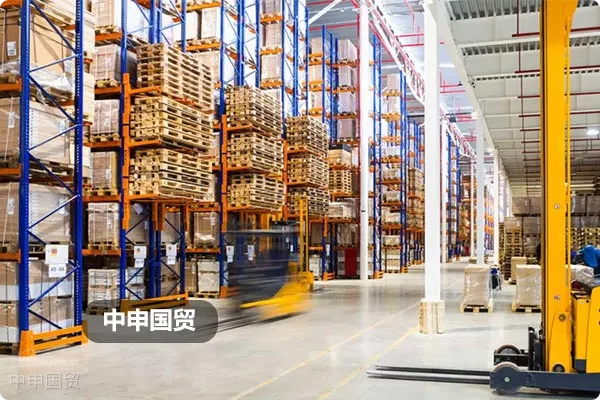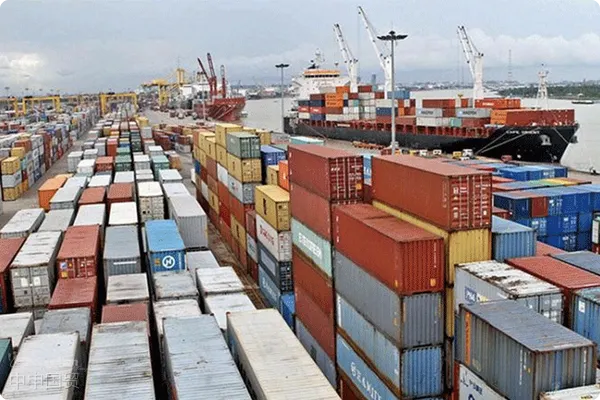- Shanghai Zhongshen International Trade Co., Ltd. - Two decades of trade agency expertise.
- Service Hotline: 139 1787 2118
Recently, many enterprises have consulted customs on how to apply for the establishment of bonded warehouses due to the need to store bonded goods. So, what are the regulatory bases for customs bonded warehouses? What conditions must enterprises meet to apply for the establishment of a bonded warehouse, and what precautions should be taken? Lets find out together.

What are the legal bases for customs supervision of bonded warehouses?
The main regulatory bases for customs supervision of bonded warehouses are the Customs Law of the Peoples Republic of China and the Regulations of the Peoples Republic of China Customs on the Management of Bonded Warehouses and the Goods Stored Therein.
On May 15, 2023, the General Administration of Customs announced the Decision of the General Administration of Customs on Amending Certain Regulations (Customs Order No. 263), which revised the Regulations of the Peoples Republic of China Customs on the Management of Bonded Warehouses and the Goods Stored Therein, effective from July 1, 2023.
In addition, the General Administration of Customs also announced the Announcement of the General Administration of Customs on Further Standardizing the Management of Bonded Warehouses and Export Supervision Warehouses (Customs Announcement No. 75 of 2023), clarifying the layout planning, standardized operation, and setup specifications for the two types of warehouses, effective from July 1, 2023.
Read the announcements:
Decision of the General Administration of Customs on Amending Certain Regulations (Customs official website link http://www.customs.gov.cn//customs/302249/2480148/5043425/index.html)
Announcement on Further Standardizing the Management of Bonded Warehouses and Export Supervision Warehouses (Customs official website link http://www.customs.gov.cn/customs/302249/2480148/5128124/index.html)
What are the requirements for the layout of bonded warehouses by customs?
To promote the orderly and healthy development of bonded warehouses and export supervision warehouses (hereinafter referred to as the two types of warehouses), customs plans the layout of bonded warehouses within the customs area according to the principles of adapting to local conditions, scientific planning, demand-based establishment, overall consideration, orderly advancement, and dynamic management. It supports eligible modern logistics enterprises in building the two types of warehouses to achieve functional complementarity and differentiated development with regional or central warehouses, avoiding resource waste and homogeneous competition.
Therefore, in the Application for Bonded Warehouse submitted by enterprises, the basic situation of the enterprise, the necessity and feasibility of warehouse establishment, etc., should be explained.
What are the requirements for the isolation facilities of warehouses by customs?
If an operating enterprise manages multiple different types of warehouses in different storage areas at the same address, physical partitions should be made between different warehouses, and clear identification should be set up.
Ordinary warehouses
(1) Have an independent isolation area with isolation facilities at least 2.5 meters high.
(2) There should be a dedicated area for storing and stacking bonded goods in the warehouse, with clear zoning signs.
Open storage yards
(1) The isolation fence should be a continuous isolation facility without damage or gaps, with a total net height of at least 2.5 meters from the ground. The isolation fence must be made of metal mesh, metal railings, solid walls, concrete wall panels, or other isolation facilities.
(2) There should be a dedicated area for storing and stacking goods in the two types of warehouses in the yard, with clear zoning signs.
Storage tanks (silos)
(1) Independent sealed tanks or silos.
(2) The tanks or silos should have clear distinguishing marks and be capable of being sealed, with flow meters or other metering facilities installed for entry and exit.
What are the requirements for the supervision facilities of warehouses by customs?
(1) Video surveillance systems should be installed in warehouse access channels, cargo loading and unloading areas, storage areas, and around isolation fences.
(2) The retention period for monitoring data shall not be less than 90 days.
(3) The monitoring system shall be installed and operational before acceptance inspection. The operating enterprise shall provide the competent customs with a dedicated query account or establish a network connection with customs, enabling real-time monitoring of warehouse and cargo status.
What are the requirements for the information system of bonded warehouse management by customs?
The warehouse shall be equipped with a warehouse management system that covers cargo inbound/outbound operations, storage locations, verification lists, and other management functions, with query statistics and business alert capabilities.
The warehouse information system shall include the following key field data:
Inbound/outbound indicators, supplier (pick-up) enterprise name, cargo serial number, material number, electronic ledger item number, commodity code, product name, specifications, country of origin, unit of measurement, quantity, value, customs declaration number, verification list number, corresponding inbound/outbound document number, storage location number, inbound/outbound date. The outbound module shall additionally include trade mode, means of transport name, and means of transport number.
The warehouse information system shall possess the following functions:
Capable of performing automatic accumulation and deduction statistics for inventory goods based on fields such as electronic ledger item number, product name, commodity code, date range, customs declaration number, and verification list number.
Capable of performing combined queries based on fields such as electronic ledger item number, product name, commodity code, date range, customs declaration number, and storage location number.
Able to query relevant inbound/outbound customs declaration numbers and verification list numbers by cargo inbound/outbound date range, and output in list format.
Capable of providing daily automatic warning alerts for warehouses with expiring operation periods and goods with expiring storage periods within 45 days prior to expiration.
The operating enterprise shall provide the competent customs with a dedicated query account or establish a network connection with customs, enabling real-time monitoring of warehouse cargo inbound, outbound, transfer, and storage status.
Warehouses that have installed and operate oil/gas/liquid chemical logistics monitoring systems in compliance with the Announcement on Clarifying Regulatory Matters for Oil, Gas, and Liquid Chemicals (Customs Announcement No. 45 of 2015) shall be deemed to possess warehouse management systems meeting customs supervision requirements.
The above content is sourced from the Bonded Supervision Division, Legal Affairs Division, and Customs.ZhongShen International TradeAs a one - stop importExport Representationservice provider, it can provide customizedimport and exportSolution. If you needforeign tradeFor import and export agency services, please feel free to contact our company for business inquiries. The consultation hotline is 139 - 1787 - 2118.
Related Recommendations
? 2025. All Rights Reserved. Shanghai ICP No. 2023007705-2  PSB Record: Shanghai No.31011502009912
PSB Record: Shanghai No.31011502009912









